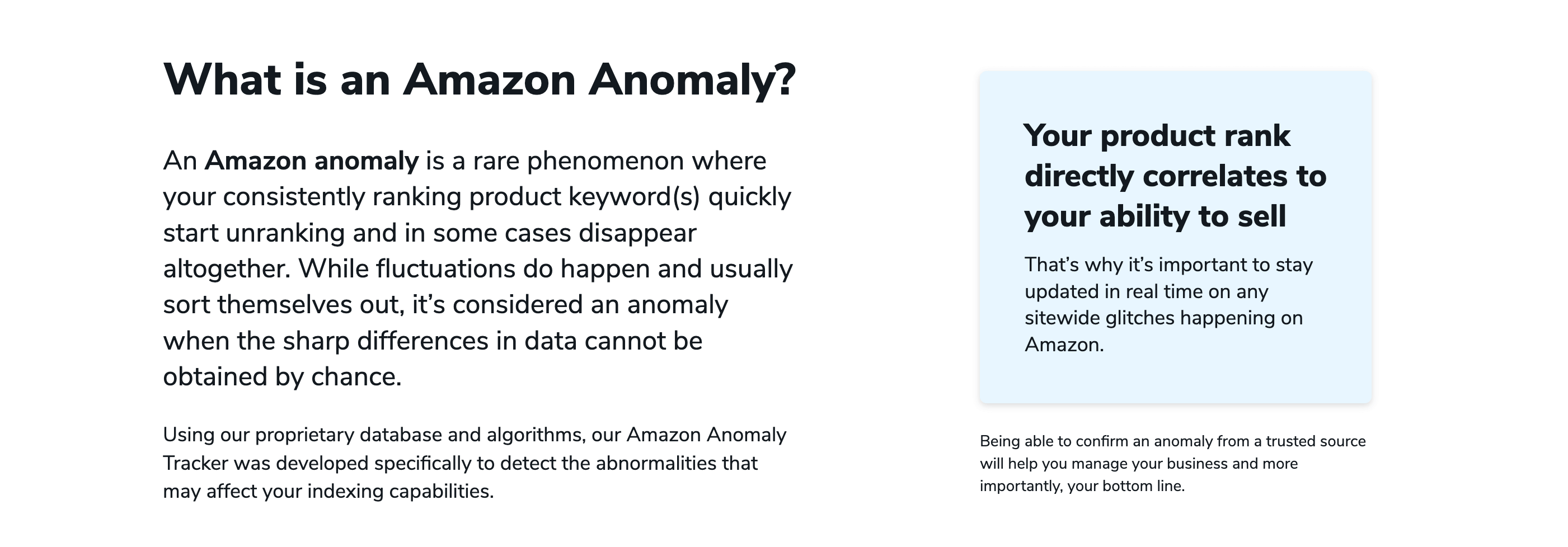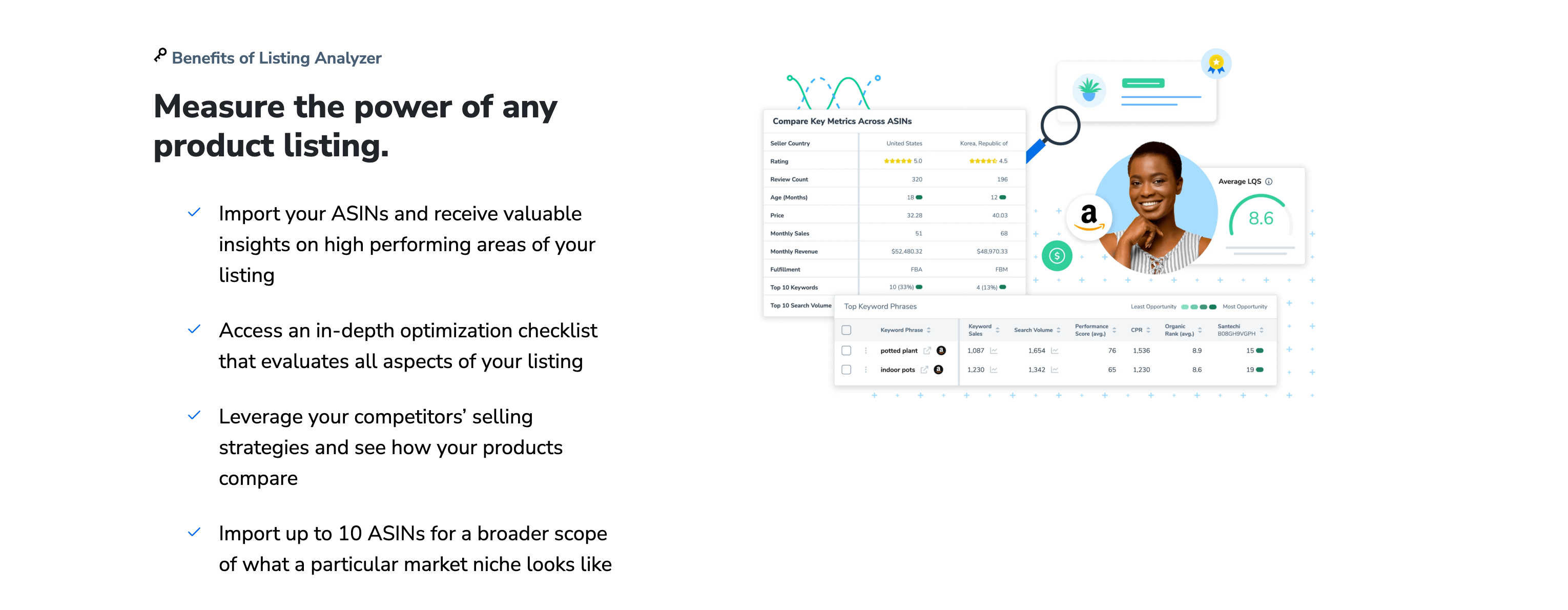Optimizing Your Keyword Research Process with Helium 10 Cerebro Filters
Keyword research is the backbone of any successful SEO strategy. It’s the process of identifying the words and phrases that potential customers use when searching for products or services online. However, with the ever-increasing competition in the digital space, it’s no longer enough to just find keywords; you need to find the right keywords. This is where Helium 10’s Cerebro Filters come into play. Cerebro is a powerful keyword research tool that allows you to dive deep into your competitors’ strategies, uncover hidden opportunities, and refine your keyword list to maximize your ROI. In this blog, we’ll explore how you can optimize your keyword research process using Cerebro Filters, step by step. Let’s get started! 🚀
1. Understanding the Basics of Keyword Research
Before diving into the specifics of Helium 10 Cerebro Filters, it’s essential to understand the fundamentals of keyword research. Keyword research involves identifying the terms and phrases your target audience uses to find products or services like yours. These keywords can be categorized into short-tail keywords (broad, high-volume terms like “shoes”) and long-tail keywords (more specific, lower-volume terms like “women’s running shoes for flat feet”). The goal is to find a balance between high search volume and low competition, ensuring your content ranks well and drives traffic.
1.1 Why Keyword Research Matters
Keyword research is the foundation of SEO. Without it, you’re essentially guessing what your audience is searching for. By understanding the keywords your audience uses, you can create content that aligns with their needs, improve your search engine rankings, and ultimately drive more organic traffic to your site. 🌐
1.2 The Role of Competitor Analysis
Analyzing your competitors’ keyword strategies can provide valuable insights. By identifying the keywords they’re ranking for, you can uncover gaps in your own strategy and discover new opportunities. This is where tools like Helium 10 Cerebro shine. 🔍
1.3 Challenges in Keyword Research
Keyword research isn’t without its challenges. The digital landscape is constantly evolving, and what works today might not work tomorrow. Additionally, high-competition keywords can be difficult to rank for, especially for new or smaller websites. This is why using advanced tools like Cerebro Filters is crucial. 🛠️
1.4 The Importance of Long-Tail Keywords
Long-tail keywords are often overlooked but can be incredibly valuable. They typically have lower search volume but higher intent, meaning the people who search for these terms are more likely to convert. By targeting long-tail keywords, you can attract highly qualified traffic to your site. 🎯
1.5 How Helium 10 Cerebro Fits In
Helium 10 Cerebro is a game-changer for keyword research. It allows you to reverse-engineer your competitors’ strategies, uncover hidden keywords, and filter results to find the most relevant opportunities. With Cerebro Filters, you can refine your keyword list to focus on the terms that will have the biggest impact on your SEO efforts. 💡

2. Getting Started with Helium 10 Cerebro
Helium 10 Cerebro is a powerful tool designed to help you uncover your competitors’ top-performing keywords. It’s part of the Helium 10 suite of tools, which is widely used by Amazon sellers and SEO professionals alike. Cerebro allows you to input a competitor’s URL and analyze the keywords they’re ranking for, giving you valuable insights into their strategy.
2.1 What is Helium 10?
Helium 10 is a comprehensive suite of tools designed to help businesses optimize their online presence. It includes tools for keyword research, product research, listing optimization, and more. Helium 10 is particularly popular among Amazon sellers, but its applications extend to any business looking to improve its SEO. 🌟
2.2 How Cerebro Works
Cerebro works by analyzing the keywords your competitors are ranking for. You simply input a competitor’s URL, and Cerebro generates a list of keywords along with data such as search volume, competition level, and estimated sales. This information can help you identify gaps in your own strategy and uncover new opportunities. 📊
2.3 Setting Up Your Cerebro Account
To get started with Cerebro, you’ll need to sign up for a Helium 10 account. Once you’ve created an account, you can access Cerebro from the Helium 10 dashboard. From there, you can input a competitor’s URL and start analyzing their keywords. 🖥️
2.4 Understanding Cerebro’s Data Points
Cerebro provides a wealth of data, including search volume, competition level, and estimated sales. Understanding these data points is crucial for making informed decisions about which keywords to target. For example, a high search volume keyword with low competition might be a great opportunity, while a high competition keyword with low search volume might not be worth the effort. 📈
2.5 Tips for Using Cerebro Effectively
To get the most out of Cerebro, it’s important to use it strategically. Start by analyzing your top competitors, then look for keywords with high search volume and low competition. Don’t forget to consider long-tail keywords, as they can be a goldmine for targeted traffic. 🎯

3. Mastering Cerebro Filters for Advanced Keyword Research
Cerebro Filters are one of the most powerful features of Helium 10 Cerebro. They allow you to refine your keyword list to focus on the most relevant and profitable opportunities. By mastering these filters, you can take your keyword research to the next level.
3.1 What Are Cerebro Filters?
Cerebro Filters are a set of advanced options that allow you to refine your keyword search results. You can filter by search volume, competition level, estimated sales, and more. These filters help you narrow down your list to focus on the keywords that will have the biggest impact on your SEO efforts. 🛠️
3.2 Filtering by Search Volume
Search volume is a key metric in keyword research. It tells you how many people are searching for a particular keyword each month. By filtering by search volume, you can focus on keywords with high potential traffic. However, it’s important to balance search volume with competition level, as high-volume keywords are often more competitive. 📊
3.3 Filtering by Competition Level
Competition level is another important factor to consider. It tells you how difficult it will be to rank for a particular keyword. By filtering by competition level, you can identify keywords that are easier to rank for, especially if you’re just starting out or have a smaller website. 🥇
3.4 Filtering by Estimated Sales
Estimated sales is a unique metric provided by Cerebro. It gives you an idea of how much revenue a keyword is generating for your competitors. By filtering by estimated sales, you can focus on keywords that are not only popular but also profitable. 💰
3.5 Combining Filters for Maximum Impact
The real power of Cerebro Filters lies in combining them. For example, you might filter for keywords with high search volume, low competition, and high estimated sales. By combining filters, you can create a highly targeted keyword list that maximizes your ROI. 🎯

4. Leveraging Cerebro for Competitor Analysis
One of the most powerful features of Helium 10 Cerebro is its ability to analyze your competitors’ keyword strategies. By understanding what your competitors are doing, you can identify gaps in your own strategy and uncover new opportunities.
4.1 Why Competitor Analysis is Important
Competitor analysis is a crucial part of any SEO strategy. By understanding what your competitors are doing, you can identify gaps in your own strategy and uncover new opportunities. This is especially important in competitive industries, where even small advantages can make a big difference. 🔍
4.2 How to Identify Your Competitors
The first step in competitor analysis is identifying your competitors. These could be businesses that offer similar products or services, or websites that rank for the same keywords as you. Once you’ve identified your competitors, you can start analyzing their keyword strategies using Cerebro. 🕵️
4.3 Analyzing Competitors’ Keywords
Once you’ve identified your competitors, you can use Cerebro to analyze the keywords they’re ranking for. This will give you valuable insights into their strategy and help you identify gaps in your own. For example, you might discover that your competitors are ranking for keywords you haven’t even considered. 📊
4.4 Identifying Gaps in Your Strategy
By analyzing your competitors’ keywords, you can identify gaps in your own strategy. For example, you might discover that your competitors are ranking for long-tail keywords that you haven’t targeted yet. By filling these gaps, you can improve your SEO and attract more traffic to your site. 🎯
4.5 Staying Ahead of the Competition
Competitor analysis isn’t a one-time task; it’s an ongoing process. By regularly analyzing your competitors’ strategies, you can stay ahead of the competition and ensure your SEO efforts are always on point. This is where tools like Cerebro can be a game-changer. 🚀

5. Optimizing Your Content Strategy with Cerebro
Once you’ve identified the right keywords using Cerebro, the next step is to optimize your content strategy. This involves creating high-quality content that targets those keywords and aligns with your audience’s needs.
5.1 The Importance of Content Optimization
Content optimization is a crucial part of any SEO strategy. It involves creating high-quality content that targets the right keywords and aligns with your audience’s needs. By optimizing your content, you can improve your search engine rankings and attract more organic traffic to your site. 🌐
5.2 Creating High-Quality Content
High-quality content is the foundation of any successful SEO strategy. It’s not enough to just target the right keywords; your content also needs to be engaging, informative, and valuable to your audience. By creating high-quality content, you can improve your search engine rankings and attract more organic traffic to your site. 📝
5.3 Targeting the Right Keywords
Once you’ve identified the right keywords using Cerebro, the next step is to target them in your content. This involves strategically placing the keywords in your headlines, subheadings, and body text. However, it’s important to avoid keyword stuffing, as this can hurt your SEO efforts. 🎯
5.4 Using Keywords in Meta Tags
Meta tags, such as the title tag and meta description, are another important place to target your keywords. These tags appear in search engine results and can influence click-through rates. By including your target keywords in your meta tags, you can improve your search engine rankings and attract more organic traffic to your site. 🔍
5.5 Monitoring and Updating Your Content
SEO is an ongoing process, and your content strategy should be too. By regularly monitoring and updating your content, you can ensure it remains relevant and continues to perform well in search engine rankings. This is where tools like Cerebro can be a valuable asset. 🛠️

6. Measuring the Success of Your Keyword Strategy
Once you’ve implemented your keyword strategy, it’s important to measure its success. This involves tracking key metrics such as search engine rankings, organic traffic, and conversion rates.
6.1 Why Measuring Success is Important
Measuring the success of your keyword strategy is crucial for understanding what’s working and what’s not. By tracking key metrics, you can identify areas for improvement and make data-driven decisions to optimize your SEO efforts. 📊
6.2 Key Metrics to Track
There are several key metrics you should track to measure the success of your keyword strategy. These include search engine rankings, organic traffic, bounce rate, and conversion rate. By tracking these metrics, you can get a comprehensive view of your SEO performance. 📈
6.3 Using Google Analytics
Google Analytics is a powerful tool for tracking the success of your keyword strategy. It allows you to monitor key metrics such as organic traffic, bounce rate, and conversion rate. By regularly reviewing your Google Analytics data, you can identify areas for improvement and optimize your SEO efforts. 🌐
6.4 Monitoring Search Engine Rankings
Search engine rankings are another important metric to track. By monitoring your rankings for your target keywords, you can see how well your content is performing in search engine results. If your rankings are improving, it’s a good sign that your keyword strategy is working. 🥇
6.5 Making Data-Driven Decisions
The key to a successful keyword strategy is making data-driven decisions. By regularly tracking and analyzing your key metrics, you can identify areas for improvement and make informed decisions to optimize your SEO efforts. This is where tools like Cerebro and Google Analytics can be invaluable. 🛠️

7. Staying Ahead of SEO Trends
The world of SEO is constantly evolving, and it’s important to stay ahead of the latest trends and best practices. By staying informed, you can ensure your keyword strategy remains effective and continues to drive results.
7.1 The Importance of Staying Informed
Staying informed about the latest SEO trends and best practices is crucial for maintaining a successful keyword strategy. The digital landscape is constantly changing, and what works today might not work tomorrow. By staying informed, you can ensure your SEO efforts are always on point. 🌐
7.2 Following Industry Leaders
One of the best ways to stay informed is by following industry leaders and experts. These individuals often share valuable insights and tips on the latest SEO trends and best practices. By following them, you can stay ahead of the curve and ensure your keyword strategy remains effective. 📚
7.3 Attending SEO Conferences
SEO conferences are another great way to stay informed. These events bring together industry leaders and experts to share the latest trends and best practices. By attending these conferences, you can gain valuable insights and network with other SEO professionals. 🎤
7.4 Keeping Up with Algorithm Updates
Search engine algorithms are constantly evolving, and it’s important to keep up with the latest updates. These updates can have a significant impact on your SEO efforts, so it’s crucial to stay informed and adjust your strategy accordingly. 🔄
7.5 Experimenting with New Strategies
Finally, it’s important to experiment with new strategies and techniques. The world of SEO is constantly evolving, and what works today might not work tomorrow. By experimenting with new strategies, you can stay ahead of the curve and ensure your keyword strategy remains effective. 🧪

8. Conclusion: Taking Your Keyword Research to the Next Level
Keyword research is a crucial part of any successful SEO strategy, and Helium 10 Cerebro Filters can take your efforts to the next level. By mastering these filters, you can uncover hidden opportunities, refine your keyword list, and optimize your content strategy to maximize your ROI. Remember, SEO is an ongoing process, so it’s important to regularly monitor and update your strategy to stay ahead of the competition. With the right tools and techniques, you can achieve long-term success in the ever-evolving world of SEO. 🚀
Table: Key Metrics to Track for Keyword Strategy Success
| Metric | Description | Why It’s Important |
|---|---|---|
| Search Engine Rankings | Your position in search engine results for target keywords | Indicates how well your content is performing in SERPs |
| Organic Traffic | The number of visitors coming to your site from organic search | Measures the effectiveness of your keyword strategy |
| Bounce Rate | The percentage of visitors who leave your site after viewing only one page | Indicates the relevance and quality of your content |
| Conversion Rate | The percentage of visitors who take a desired action on your site | Measures the ROI of your keyword strategy |
| Keyword Difficulty | The level of competition for a particular keyword | Helps you identify keywords that are easier to rank for |
By following the steps outlined in this blog, you can optimize your keyword research process with Helium 10 Cerebro Filters and achieve long-term success in the world of SEO. Happy optimizing! 🎉


Comments